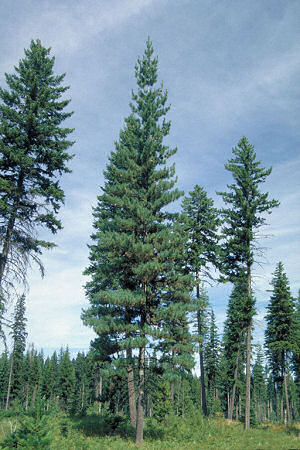
Summarize Description
and Ecology of Organism
The
Northern Idaho Ground Squirrel is among the smallest squirrels in length, at
only 9 inches with a tail of one to two inches (Recovery Plan). They can be
identified by their dark reddish-gray fur coat. Cold temperatures force this
squirrel to consume lots of grass seed and other greens for hibernation
periods. These squirrels are commonly found in mostly across Idaho.

This ground squirrel is not abundant in
meadows that contain high densities of small trees and rocky areas that reside
in dry soils (Sherman and Yensen 1994). Ideal territories for the squirrels are
within 3,000 and 4,500 feet elevation (Recovery Plan). Due to hibernation, they also create burrows
in soil that is deeper than one meter. This shelters them from the harsh Idaho
winters. Entrances to the burrows are often hidden under logs or rocks for
further concealment.
Geographic and Population Changes
Similarly to
most species on the Endangered Species List, this squirrel’s habitat is
threatened by habitat loss caused by forest encroachment and agriculture. Forests are taking over their meadow habitats.
This is a serious issue because ground squirrels require open meadows as a mode
of transportation.
These changes have significantly decreased their
overall population. Due to the ground squirrels shrinking habitat, its initial
population of 5,000 has dropped to an estimated 350 squirrels across Idaho.
Thankfully, through improved and well thought out recovery plan, it is
estimated that the Northern Idaho Ground Squirrel’s population will continue to
increase.
Listing Date and Type of Listing
The
Northern Idaho Ground Squirrel was listed on April 5th, 2000
It
was listed under a threatened status.
The
Recovery Plan was listed September 16th, 2003
Cause of listing and Main threats to its continued
existence
In addition to forest encroachment and agriculture expansion, Northern Idaho
Ground Squirrels population was decimated because of habitat loss and fragmentation.
Recent housing developments and conversion of precious meadows to usable farmland is another factor causing the squirrel’s endangerment.
Main threats to its population include, “of
the 34 extant population sites, 13 are entirely on private property” (Recovery
Plan). This makes it difficult for the
government to enforce laws and regulations that would help preserve and
strengthen the already weak population. Northern Ground Squirrels are the prey
of badgers and hawks. Due to their smaller and fragmented populations, over
consumption could completely eliminate them.
Description of
Recovery Plan
The main objectives of the Recovery Plan are to
delist the species, but only after its metapopulations are able to maintain a
population over 500 species for a five year period. Before any other steps are
taken, the existing metapopulations must be preserved for future species.
Population data is scare for this species, the Recovery Plan asserts that data
will be collected so that accurate population estimates will be created. If the
Recovery Plan is completed as stated, the Northern Idaho Ground Squirrel could
be delisted by 2010 (Recovery Plan).
Citations
Yensen, E. 1991. Taxonomy and distribution of the
Idaho ground squirrel, Spermophilus. J. Mammal. 72:583-600 http://imnh.isu.edu/digitalatlas/bio/mammal/Rod/squir/igsq/igsq.htm
U.S.
Fish and Wildlife Service. 2003. Recovery Plan for the Northern Idaho Ground
Squirrel (Spermophilus brunneus brunneus). Portland, Oregon. 68 pp.
Pictures
(In order of appearance)

No comments:
Post a Comment